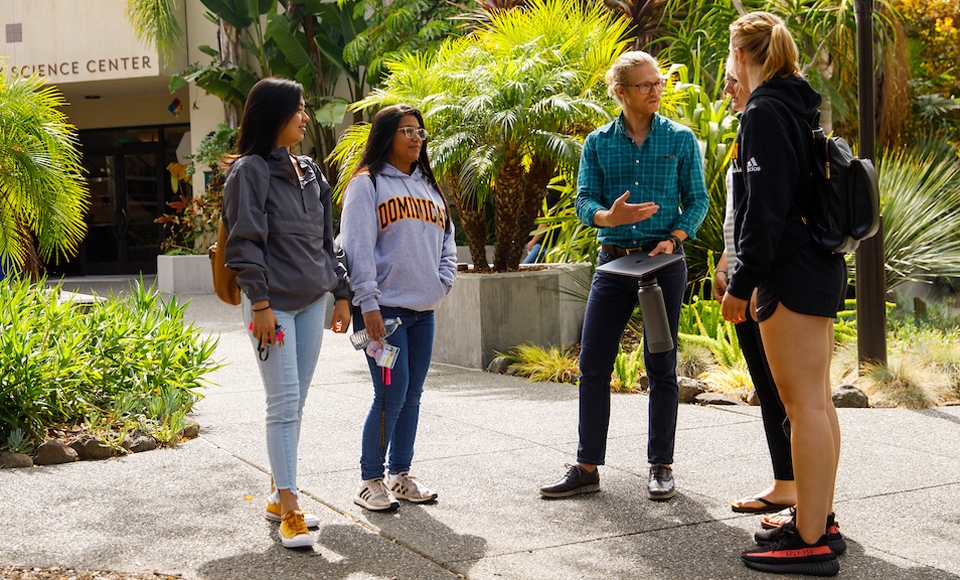Breadcrumbs
- News
- News Archive
- Scientific American Article Highlights Importance of Convincing “Passive Positives” to Get COVID Vaccine

The Centers for Disease Control and Prevention recommends the updated COVID-19 vaccine for everyone aged 6 months and older. However, in the first month following the availability of the new COVID-19 vaccines, only 7% of U.S. adults received the shots.
The message is not getting through, says Dominican University of California psychology professor Dr. Benjamin Rosenberg.
Rosenberg recently wrote an opinion article in Scientific American and talked with San Francisco’s ABC-7 about how to inspire people to get the shot at a time of extreme fatigue, loss of trust, disinformation, politicization and lack of public health funds for education and outreach.
Dr. Rosenberg’s Health and Motivation (HAM) Lab applies social psychological theorizing on persuasion and motivation to health-related issues. In recent years he has focused on persuasion and vaccines – why people do or do not get vaccinated. Specifically why, in the face of so much evidence about vaccine effectiveness, people continue to fight back against getting the COVID jab.
“Fewer than one-fifth of people got the bivalent shot last year, and interest has waned even further as more and more folks have resumed normal life. In the absence of any kind of campaign, we'll be lucky if that many people get this new COVID vaccine.”
One key to reducing COVID related illness and deaths is reaching “passive positives.” These people have gotten COVID shots in the past and generally approve of vaccination. But they are unlikely to expend energy to find out where they can get another shot and are likely ambivalent about receiving one.
Surprisingly, this group is among the hardest to convince to get the new vaccine.
“These folks are the most likely to say yes to the vaccine, but we have to make it so they feel positively about getting another shot through messaging and, especially, we have to make it easy for them to get a shot,” Rosenberg says.
While information about the COVID vaccine is available on numerous websites, people often are not included to search for additional information due to a lack of motivation. Making it easy to get the vaccine should be a priority.
“If people lack motivation to get the vaccine, they will be less likely to exert effort to receive one,” Rosenberg says. “ Moreover, even if someone becomes motivated to get the shot, that motivation is likely to be short-lived.”
“The clearest path to more people getting shots is to make it easy to do so – proactively offering the shot when a person visits a pharmacy, a doctor’s office, or an urgent care center. The pharmacist or medical staff should not just describe the complications that could arise if someone doesn't get the shot but highlight the benefits of getting it as well.”
Rosenberg suggests applying the IIFF Model — a framework that maximizes the likelihood that people will act on their favorable attitudes — to increase booster uptake.
The IIFF Model:
Immediate and complete booster opportunity: Have a booster shot immediately available (at doctors’ offices and pharmacies) the instant a person becomes motivated to get the shot.
Information about eligibility for a booster: Information must be proactively presented to passive positives (e.g., via doctors, nurses, or pharmacists, as well as public health messaging).
Focused engagement at the time of the booster opportunity: Take steps to make sure people actively process information about the benefits of booster shots to ensure that passive positives will engage with the information and are aware of the immediate opportunity to get one.
Favorable activation of booster attitudes at the time of booster opportunity: At the time a booster is offered, the practitioner should purposely encourage patients to focus on the positives of being boosted.